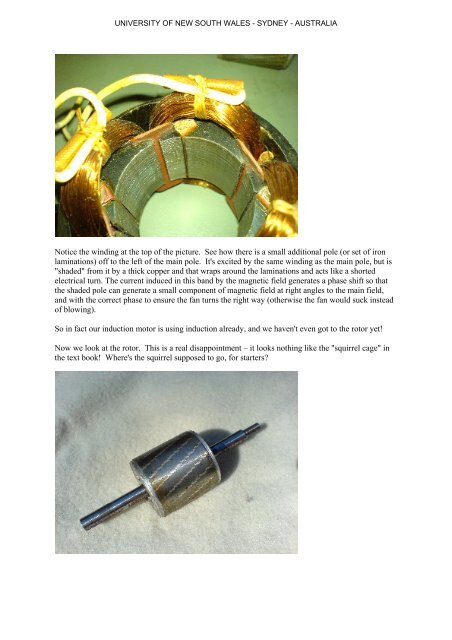How real electric motors work - School of Physics - The University of ...
How real electric motors work - School of Physics - The University of ...
How real electric motors work - School of Physics - The University of ...
You also want an ePaper? Increase the reach of your titles
YUMPU automatically turns print PDFs into web optimized ePapers that Google loves.
UNIVERSITY OF NEW SOUTH WALES - SYDNEY - AUSTRALIA<br />
Notice the winding at the top <strong>of</strong> the picture. See how there is a small additional pole (or set <strong>of</strong> iron<br />
laminations) <strong>of</strong>f to the left <strong>of</strong> the main pole. It's excited by the same winding as the main pole, but is<br />
"shaded" from it by a thick copper and that wraps around the laminations and acts like a shorted<br />
<strong>electric</strong>al turn. <strong>The</strong> current induced in this band by the magnetic field generates a phase shift so that<br />
the shaded pole can generate a small component <strong>of</strong> magnetic field at right angles to the main field,<br />
and with the correct phase to ensure the fan turns the right way (otherwise the fan would suck instead<br />
<strong>of</strong> blowing).<br />
So in fact our induction motor is using induction already, and we haven't even got to the rotor yet!<br />
Now we look at the rotor. This is a <strong>real</strong> disappointment – it looks nothing like the "squirrel cage" in<br />
the text book! Where's the squirrel supposed to go, for starters?
















